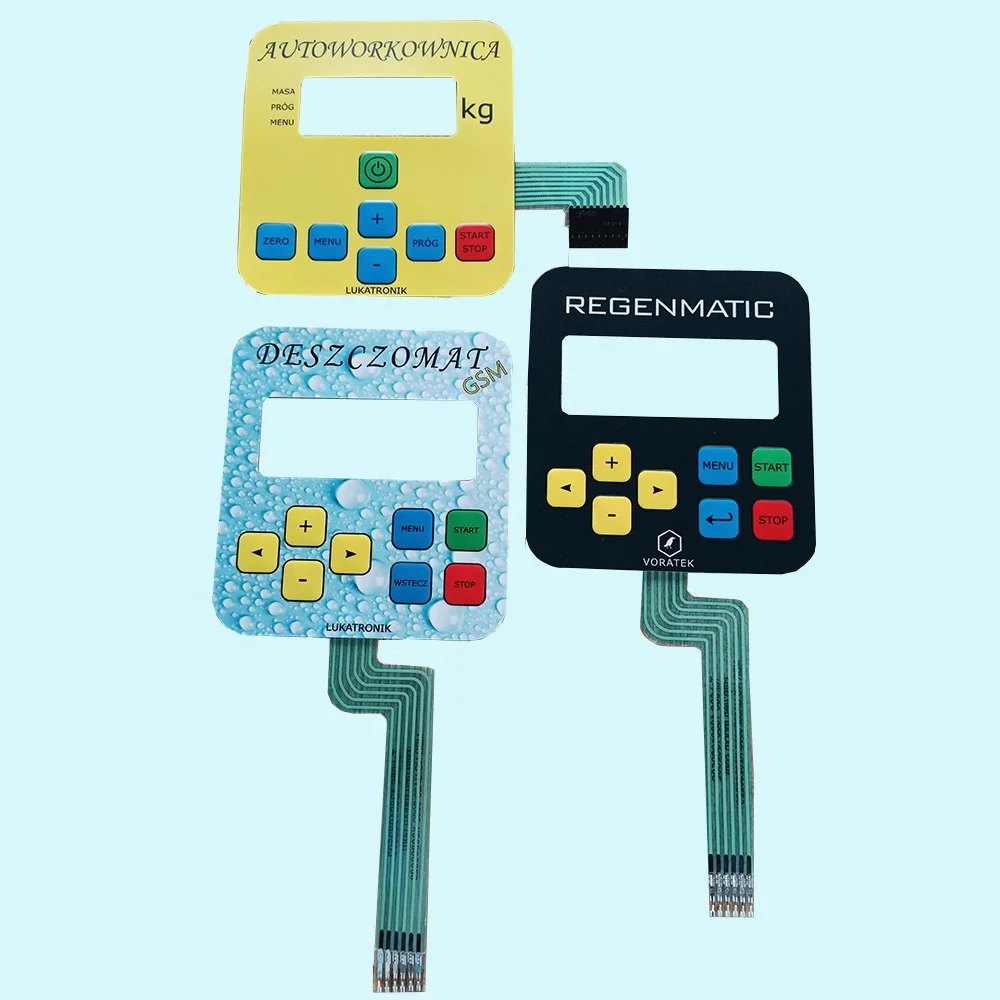Explore the Benefits of Using a Membrane Switch in Modern Devices
Explore the Benefits of Using a Membrane Switch in Modern Devices
Blog Article
Comprehending Membrane Changes: The Key to Trusted and durable Controls

What Are Membrane Layer Switches?
Membrane layer switches are a sophisticated option in the realm of interface technology, integrating capability and design seamlessly. These devices function as an interface in between customers and digital systems, incorporating several elements into a compact format. Usually constructed from adaptable, slim layers of products, membrane layer buttons are designed to respond to touch, allowing users to engage with equipment and electronic gadgets properly.
The main components of a membrane switch include a published circuit layer, graphic overlay, and a spacer layer that avoids unintentional activation. The visuals overlay can be personalized to reflect brand identity or individual choices, improving looks while making certain use. Membrane buttons are generally made use of in different applications, consisting of medical devices, consumer electronic devices, and industrial devices, owing to their resilience and resistance to ecological factors such as dampness and dirt.
One of the vital benefits of membrane layer buttons is their ability to withstand deterioration, making them ideal for high-traffic atmospheres. Additionally, they are light-weight and require very little room, enabling innovative layouts in product development. Generally, membrane layer switches represent a practical and reliable option for modern electronic user interfaces, marrying technology with user-centric style concepts.
Exactly How Membrane Layer Switches Job
The operation of membrane layer switches joints on a straightforward yet effective system that translates user input into digital signals. When a user presses the button, the top layer warps, enabling a conductive element in the circuit layer to make contact with a matching conductive pad on the underside of the visuals overlay.
The layout of membrane buttons can differ, but they frequently include domes or tactile aspects to supply comments to the individual, boosting the general experience - membrane switch. The materials utilized in membrane layer buttons, such as polyester or polycarbonate, contribute to their durability and resistance to ecological elements, including moisture and dust. In addition, the published circuits are generally encapsulated, which safeguards them from wear and tear with time.
Advantages of Membrane Switches

In addition, membrane switches are understood for their durability. Created from robust materials, they are resistant to dust, dampness, and physical wear, which dramatically prolongs their life expectancy compared to standard mechanical buttons. This sturdiness makes them particularly suitable for high-traffic settings and applications calling for durability.
An additional substantial advantage is the convenience of cleaning and maintenance. The smooth surface of membrane layer switches over lessens dust accumulation and is often invulnerable to spills, making them excellent for setups that need frequent sanitization.
Moreover, membrane layer buttons use a structured profile, bring about a thinner style that can be integrated right into numerous gadgets without adding mass. This attribute not only boosts the aesthetic allure however likewise adds to an extra ergonomic item layout.
Applications of Membrane Layer Switches
Versatile and user-friendly, membrane buttons find applications throughout a variety of industries, consisting of clinical tools, customer electronic devices, and industrial devices. In the clinical field, these buttons are important to gadgets such as diagnostic tools, client monitoring systems, and mixture pumps, where reliability and simplicity of cleansing are important. Their ability to keep and endure extreme settings functionality makes them excellent for such applications.

In customer electronics, membrane layer buttons are made use of in products like microwaves, washing devices, and push-button controls - membrane switch. Their smooth layout permits instinctive interface, boosting the total user experience while supplying durability and resistance to wear and tear
Commercial tools likewise gains from membrane switches, especially in control panels for equipment and automation systems. These switches use defense against dust and her comment is here wetness, making certain constant efficiency in difficult environments. Their customizable functions permit makers to customize them to specific operational requirements, boosting effectiveness and capability.
Choosing the Right Membrane Switch Over
When picking a membrane layer switch, it is vital to consider different factors that affect efficiency and suitability for particular applications. The primary factors to consider consist of ecological problems, responsive comments, durability, and style specifications.
First, analyze the operating environment; switches exposed to dampness, chemicals, or extreme temperatures require particular materials to guarantee durability and functionality. Next off, review the need for responsive comments. Depending on individual communication, some applications might take advantage of a responsive reaction to confirm activation, while others may favor a non-tactile style for visual factors.
Resilience is another essential aspect; membrane layer buttons must be created to endure frequent usage, impacts, and abrasion. Guarantee the chosen useful reference button can withstand the expected lifecycle, especially in high-usage scenarios.

Conclusion
In conclusion, membrane switches over function as vital elements in the design of resilient and reputable control systems across different industries. Their compact design, integrated with durable building and construction and customizable functions, enhances individual communication while making certain long life popular environments. The convenience of membrane changes permits tailored solutions that satisfy certain functional demands, enhancing their significance in modern-day technology. As sectors continue to evolve, the relevance of incorporating efficient membrane layer button solutions can not be overemphasized.
Membrane switches represent a crucial facet of contemporary interface design, blending performance with strength in different applications.Membrane layer buttons are an advanced service in the realm of user interface technology, integrating functionality and style seamlessly. Usually created from adaptable, slim layers of materials, membrane buttons are created to respond to touch, enabling users to interact with equipment and electronic gadgets effectively.
The layout of membrane layer switches can differ, however they frequently incorporate domes or responsive elements to supply responses to the individual, enhancing the total experience.In final thought, membrane layer changes offer as vital elements in the layout of durable and trusted control systems across numerous markets.
Report this page